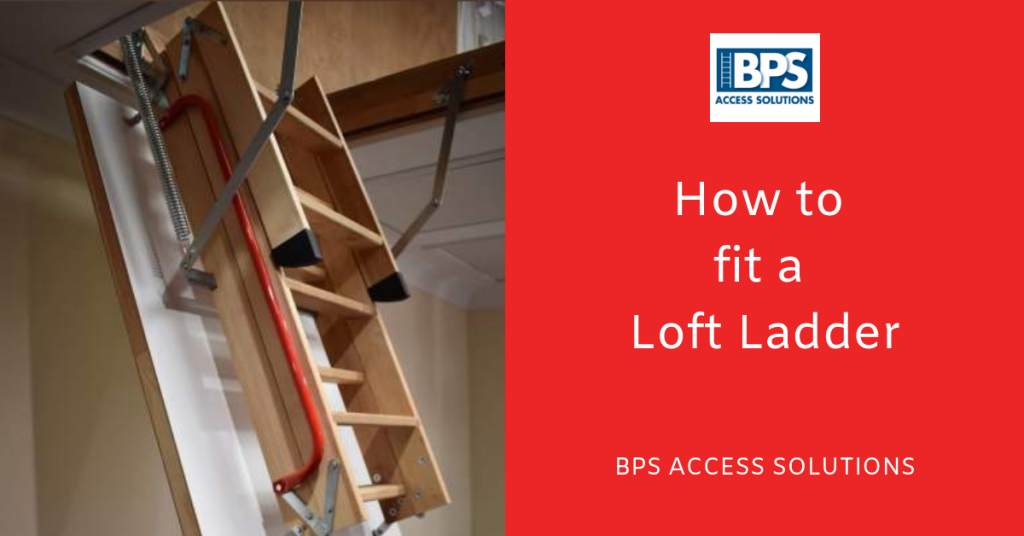How do I fit a loft ladder?
Although the idea of fitting a ladder may seem daunting, it is often much simpler than expected. Most loft ladder kits are designed to be installed by the homeowner with the minimum of fuss and without the need for specialist tools or the expense of having loft ladders fitted by professionals. The first factor to consider is the size of the hatch opening. Since loft hatch sizes are rarely uniform, especially in older buildings, it is worth checking the dimensions of hatch required to accommodate the model of ladder desired. This information is easily available on suppliers’ websites. Even if you possess the skills to enlarge the hatch this can make the job more difficult and time consuming. It is also worth taking time to check the space the ladder will occupy in the loft when stowed before purchase as this can also limit the choice of suitable model.
There are many reasons to make the most of your loft, whether converting it into another bedroom or study space or exploiting the otherwise wasted room to increase storage and free up space in the rest of your home. Whatever your eventual plan, it will be necessary to fit a permanent means of access. Whether it is possible to fit a permanent set of loft stairs is largely down to available space but often this is not possible or the homeowner would prefer to have a more discreet means of entry that remains out of sight when not in use. In this case the obvious answer is to fit a retractable loft hatch and ladder which stores away behind the loft hatch until needed. This also helps to reduce heat loss through a loft opening that is permanently open.
Preliminary jobs
Once you have selected and purchased your loft ladder, take time to read through the instructions to familiarise yourself with the installation process and identify any potential pitfalls. Make sure all the components are included and undamaged and all required tools are present. Loft ladder installation should always be carried out by two people, one above and one below and a temporary means of access such as a ladder or stepladder will be needed until the loft ladder is fitted. Make sure the loft work area and the room below are well lit and pets and children are kept away from the work area. Finally make sure the floor below is level and safe with a clear area of at least one square metre where the foot of the ladder will be deployed.
For all retractable loft ladders a drop down loft hatch will be needed to deploy the ladder properly instead of the traditional lift up type, however most kits will contain the necessary parts for conversion along with instructions on how to fit a loft hatch. The new trapdoor should be attached flush with bottom of the hatch frame with a gap of 2mm all around and attached at the same end of the frame as the ladder. The catch assembly to hold the hatch in place can now be attached as instructed.
How to fit a loft ladder
There are three main types of retractable loft ladder, each with their own different installation process:
Aluminium slider ladder:
These consist of two or three sections that slide on top of each other and lie flat in the loft when stowed. When deployed a pivot mounting at the top allows the top section to tilt down and the other sections slide down and when fully extended lock into place. To install slide the ends of the pivot mounting into the top ends of the stiles (the upright parts of the ladder) and secure with pivot bar stops. After the handrails are attached the ladder is fully extended until it locks in place. The person in the loft then places the pivot bar mounts in place on top of the hatch crossbar (at the same end as the hatch hinges) and screws them in place whilst the worker below holds the ladder securely in place. The ladder is then positioned at a 65 to 80 degree angle and internal pivot stops are then tightened so this becomes the default angle when the ladder is deployed. Two retaining bars are then fixed to the top of the stiles and screwed to a wooden crossbar in the loft to ensure the top remains in place when the ladder is fully extended. All that remains is to tighten two more pivot stops to hold the ladder secure when stowed.
Concertina ladders:
These are by far the easiest loft ladder to install as they are delivered fully assembled. As the name suggests, when stowed they are a compact block which is only 450mm high, taking up very little loft space. When deployed this block extends into a set of criss–cross stiles with treads in between that is secured with steel carriage bolts to increase stability and prevent accidental retraction. Handrails can then be attached for added stability and safety. The top of the ladder is securely attached to a metal plate which is fixed vertically to the side of the hatch frame above the hatch hinges with four strong screws. This, along with the hatch conversion, is the only installation needed. Due to its compact nature this design will fit any hatch that an adult can fit their shoulders through so no alterations to the frame should be needed.
Folding wooden loft ladders:
These are a little more complex to install than the other two types discussed here, as due to the increased weight of the wooden ladder they are supplied built into a reinforced hatch. This means a frame capable of supporting the weight of the ladder and hatch must be built into the loft floor. Once this is done the hatch assembly can be lowered into the frame and secured with eight 70mm screws. The ladder can then be deployed and the ends cut to size to give the desired angle of descent. Although this involves more work many owners prefer the look of a wooden ladder and they can be varnished or painted to match the surrounding fixtures. Due to the heavier construction they have a far higher weight tolerance which can be useful if the loft space is used for storage and heavy loads need to be transported.
BPS Access Solutions stock a range of loft ladders that can all be fitted by the customer with no need for specialist equipment or tools. All models come with full instructions and clear diagrams detailing the whole installation process and our expert staff are happy to answer any customer queries on installation or which model would best suit the customers needs. All our loft ladders conform to the latest EN 14975 safety standard and we offer free next day delivery on all models with a no quibble lifetime guarantee. We also stock a range of loft ladder accessories and check our prices against competitors daily to ensure the best quality at the best price. For more information please contact us, we are happy to help.
Website: www.laddersandscaffoldtowers.co.uk
Email: customerservices@bpsaccesssolutions.co.uk
Telephone: 0333 006 9776
No related posts.



